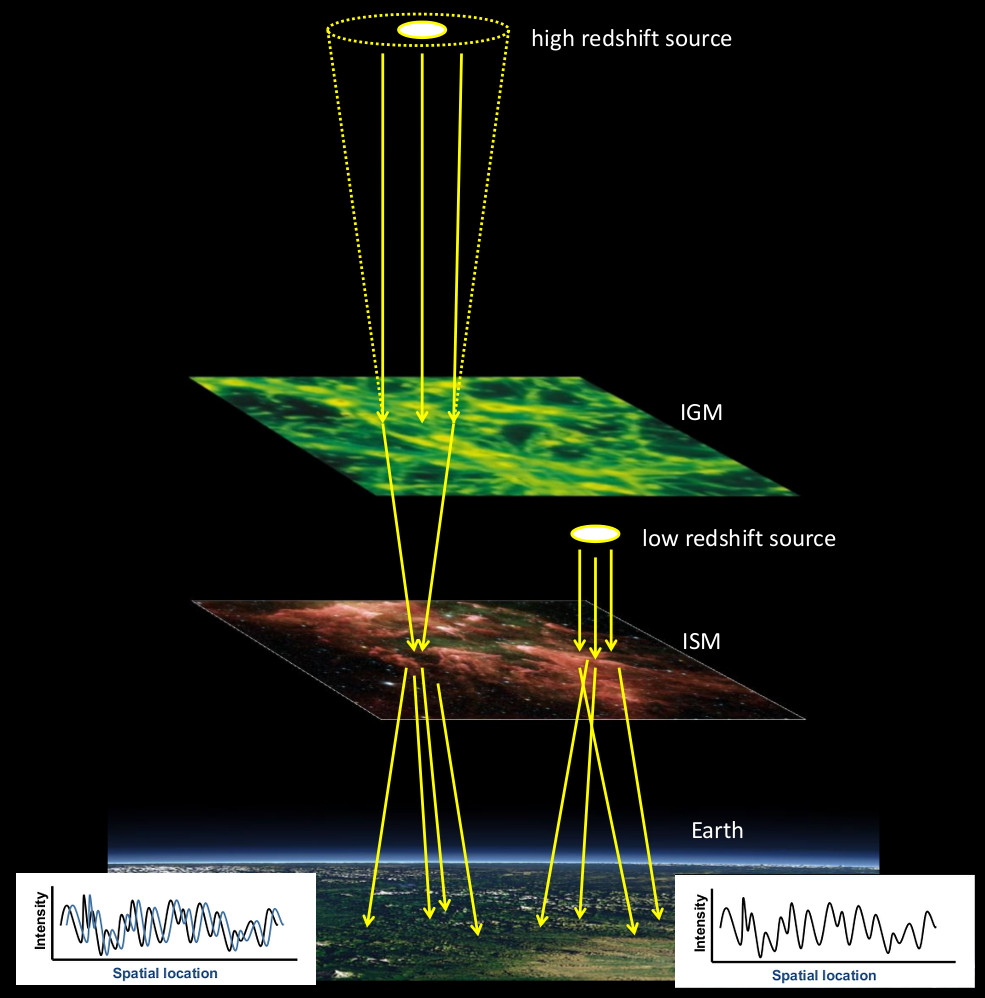| Description: | Two phenomena observed in the last decade were attributed to the scattering of radio waves in the ionised intergalactic medium (IGM). The first was the observed suppression of interstellar scintillation of compact AGNs at redshifts greater than 2; this was thought to arise from an increase in the apparent angular sizes of high redshift sources due to scattering in the IGM. The second is the frequency-dependent broadening of pulses seen in a fraction of extragalactic fast radio bursts. These phenomena could potentially provide unique probes of the turbulent properties of the ionised IGM, where the majority of baryons in the Universe reside, allowing us to also map and model the distribution of intergalactic ionised gas. In this talk, I will discuss whether these phenomena can indeed be attributed to intergalactic scattering. I will also talk about whether we can expect to detect IGM scattering with current and next generation radio telescopes such as RadioAstron and the Square Kilometre Array, based on observational constraints and theoretical models. The magnitude of scattering in the IGM will have implications for the detectability of extragalactic fast radio transients at MHz frequencies.
Figure: Scattering in the ionised and turbulent intergalactic medium (IGM) can lead to an increase in the apparent angular size of a compact radio source in the background. Since sources that have undergone IGM scattering will appear larger from the viewpoint of the Galactic interstellar medium (ISM), interstellar scintillation will be suppressed in these sources, relative to sources not scatter broadened by the IGM. This idea was initially used to explain observations revealing that compact AGNs at high redshift tend to scintillate less than their low redshift counterparts. While more recent studies have found that this is not the case, there is potential for very sensitive instruments such as the Square Kilometre Array to monitor the interstellar scintillation of compact AGNs, and thus use the resolving power of interstellar scintillation to detect IGM scatter broadening down to ~ 1 microarcsecond scales. |

